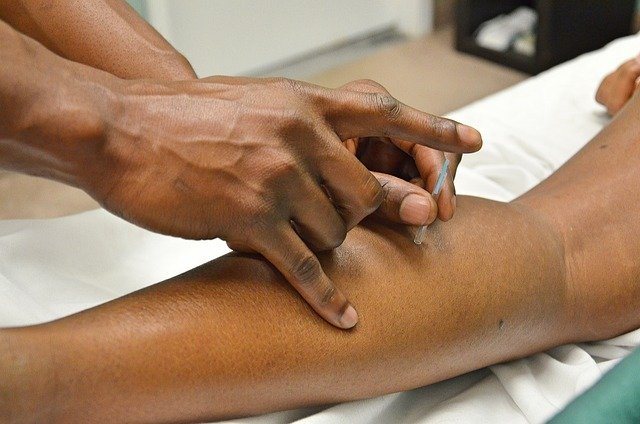Breast Cancer Signs: Early Detection Can Save Lives
Recognizing breast cancer signs early can significantly improve treatment outcomes. Common symptoms include changes in breast appearance, such as swelling or asymmetry, the presence of lumps, skin changes resembling orange peel, and unusual nipple discharge. Routine screening methods like self-examinations, mammograms, and clinical breast exams play a crucial role in early detection.

Breast cancer affects millions of people worldwide, making awareness of its signs and symptoms crucial for early intervention. When detected in its initial stages, breast cancer has significantly higher treatment success rates, with five-year survival rates exceeding 90% for localized cases. Understanding the various manifestations of this disease enables individuals to recognize changes that warrant medical attention, potentially saving lives through prompt diagnosis and treatment.
Common Symptoms of Breast Cancer
Breast cancer symptoms can vary considerably between individuals, with some experiencing obvious changes while others notice subtle alterations. The most recognizable symptom remains a new lump or mass in the breast tissue, which may feel hard, irregular, or different from surrounding tissue. However, not all lumps indicate cancer, as benign conditions can also cause similar changes.
Other significant symptoms include changes in breast size or shape, skin dimpling or puckering that resembles an orange peel texture, and nipple discharge that occurs without squeezing. Persistent breast or nipple pain, though less common as an initial symptom, should not be ignored. Swelling in the lymph nodes under the arm, around the collarbone, or near the breastbone may also indicate the presence of breast cancer.
Skin changes deserve particular attention, including redness, scaling, or thickening of the breast skin or nipple area. Some individuals notice their nipple turning inward when it previously pointed outward, or experience unexplained changes in breast texture that persist beyond normal menstrual cycle variations.
How to Detect Breast Cancer
Regular self-examination forms the foundation of early detection, though it should complement rather than replace professional screening. Monthly breast self-exams help individuals become familiar with their normal breast tissue, making it easier to identify changes. The best time for self-examination is one week after menstruation ends, when hormone levels are lowest and breast tissue is least likely to be swollen or tender.
During self-examination, use the pads of your fingers to feel for lumps or changes in breast tissue, moving in a circular pattern from the outside toward the nipple. Examine both breasts while lying down and standing up, as different positions can reveal various abnormalities. Visual inspection in front of a mirror, with arms at your sides and then raised overhead, helps identify changes in breast shape, size, or skin appearance.
Professional screening through mammography remains the gold standard for early detection, particularly for individuals over 40 or those with family history of breast cancer. Clinical breast examinations performed by healthcare providers can identify changes that might be missed during self-examination, as medical professionals are trained to recognize subtle abnormalities.
Early Detection Can Save Lives
The relationship between early detection and survival rates demonstrates the critical importance of awareness and regular screening. When breast cancer is detected before it spreads beyond the breast tissue, treatment options are more varied and generally less invasive. Early-stage breast cancer often requires less aggressive treatment protocols, resulting in better quality of life during and after treatment.
Statistics consistently show that breast cancer detected in Stage 0 or Stage I has excellent prognosis, with survival rates approaching 100% when appropriate treatment is received. As cancer progresses to later stages, survival rates decrease significantly, emphasizing the value of catching the disease in its earliest phases.
Early detection also allows for more treatment options, including breast-conserving surgery rather than mastectomy in many cases. Patients diagnosed early often experience shorter treatment durations, reduced side effects, and faster recovery times compared to those diagnosed at advanced stages.
Regular screening schedules vary based on individual risk factors, but most guidelines recommend annual mammograms beginning at age 40 for average-risk individuals. Those with family history, genetic mutations, or other risk factors may need to begin screening earlier or undergo additional imaging techniques such as MRI or ultrasound.
The psychological benefits of early detection cannot be understated, as patients diagnosed in early stages often experience less anxiety and better emotional outcomes throughout their treatment journey. Early diagnosis provides more time to make informed treatment decisions and seek second opinions when necessary.
Conclusion
Breast cancer awareness and early detection represent powerful tools in the fight against this disease. By understanding common symptoms, practicing regular self-examination, and maintaining appropriate screening schedules, individuals can significantly improve their chances of detecting breast cancer in its most treatable stages. While the prospect of breast cancer can be frightening, knowledge and proactive health management provide the best defense against this disease. Remember that many breast changes are benign, but any persistent or concerning symptoms warrant professional medical evaluation to ensure proper diagnosis and peace of mind.
This article is for informational purposes only and should not be considered medical advice. Please consult a qualified healthcare professional for personalized guidance and treatment.




